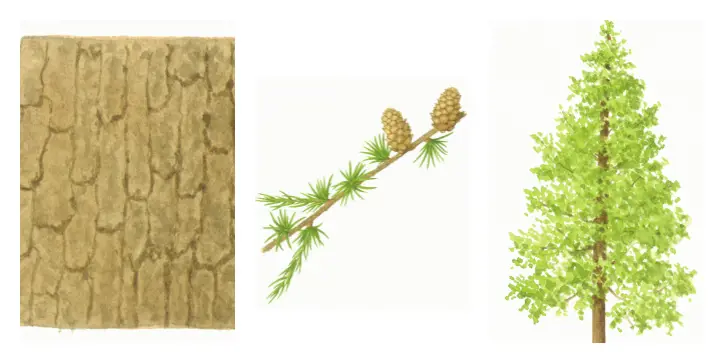Hybrid larch
Hybrid larch

This widely used tree came into existence as a result of an accidental cross-pollination of Japanese and European larch on the Duke of Atholl’s estate in Dunkeld. The offspring grew faster than the parent and survived under worse conditions. This made it a great choice for timber production.
The hybrid larch’s botanical name is Larix x eurolepis. Unlike other conifers, it changes crown colour in spring, autumn and winter. These changing colours make it a popular choice for forests which balance timber production with visitor access.
Facts and stats
- Lifespan: 300 years
- Height: Trees can reach up to 40 metres.
- Leaves: Its deciduous needles grow in rosettes on the short shoots.
- Seeds: Red-purple female flowers form cylindrical cones with round scales, many of which turn outwards.
- Bark: It has grey-brown bark, fissured into regular plates.
- Native to: Central Europe and Japan
- Uses: Its strong durable timber is used for fencing, rails and gates.